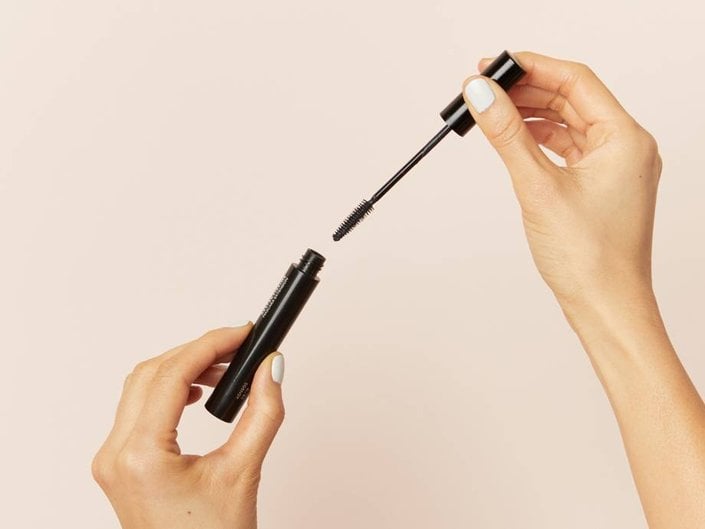What Is Tubing Mascara and Why You Should Use It
June 11, 2024
What is Tubing Mascara?
According to Irwin, a tubing mascara works exactly the way it sounds. "Instead of painting the lashes with color like a traditional mascara, tubing mascaras create little tubes around each lash that bind to your lashes," she says. "You aren't going to get a ton of volume with these because they tube around what you have already have." But if you have trouble with mascara smudging or running, you're going to be a fan of tubing mascaras because they are way less messy than other formulas.
Tubing Mascara vs. Traditional Mascara
When it comes to choosing a mascara, there are two main types to consider: tubing mascara and traditional mascara. While both types of mascara can help to enhance your lashes, they each have their own unique benefits and drawbacks.
Tubing mascara is a relatively new type of mascara that has gained popularity in recent years. It is made with a special type of polymer that forms tiny tubes around each lash. This creates a natural look that is less likely to smudge or flake. Tubing mascara is also easier to remove than traditional mascara, as it does not require any harsh chemicals.
Traditionl mascara, on the other hand, has been around for much longer. It is made with waxes and oils that coat the lashes and create a more dramatic look. Traditional mascara can be more difficult to remove than tubing mascara, and it is more likely to smudge or flake.
Ultimately, the best type of mascara for you depends on your individual needs and preferences. If you are looking for a natural look that is easy to apply and remove, then tubing mascara is a great option. If you are looking for a more dramatic look, then traditional mascara may be a better choice.
How to Apply Tubing Mascara
To apply tubing mascara, start by curling your lashes for a lifted and dramatic look. Then apply your favorite Mascara Primer. One of our favorite primers is the Lash Sensational Sky High® Tinted Primer. Mascara primer will actually give you extra volume, according to Irwin, so if you prefer that type of look, make sure you use one. Then, apply a tubing mascara the same way you normally do with any mascara — start at the roots and wiggle the mascara from root to tip," she says. Ensure each lash is evenly coated and avoid applying too much to prevent clumping. Try the Double Extend Beauty Tubes Lengthening Mascara by L’Oreal Paris!
.jpg?h=705&w=705&hash=4FD86E6EFEA9B09B4ACC22AB5CCDD9A0)
Unlike traditional mascaras, avoid letting tubing mascara dry before adding a second coat, as this can cause clumping. If desired, apply a second coat for more volume and definition, but let the first coat dry completely first.
To remove tubing mascara, simply wet your lashes with warm water and gently rub them with your fingers. The mascara will come off easily without leaving any residue.
Tips for using tubing mascara
For best results, follow these tips when applying tubing mascara:
- Start with dry lashes: Tubing mascara works best on dry lashes. If your lashes are wet, the mascara will not adhere properly and may smudge or flake.
- Comb through your lashes: Before applying tubing mascara, use a clean lash comb or a spoolie brush to comb through your lashes. This helps to separate any clumps and ensures that your lashes are evenly spaced, allowing for a more natural and defined look.
- Avoid pumping the mascara wand: When you're ready to apply tubing mascara, avoid pumping the wand in and out of the tube. This can introduce air into the mascara, causing it to dry out faster and potentially leading to clumping. Instead, gently twist the wand inside the tube to pick up the desired amount of product.
- Apply a thin coat: Tubing mascara is designed to be applied in thin coats. Applying too much mascara will weigh your lashes down and make them look clumpy.
- Don't forget your lower lashes: Tubing mascara can also be applied to your lower lashes for a more complete and balanced look. Use the same technique of starting at the base and wiggling the wand from root to tip to coat your lower lashes. Be careful not to apply too much product, as it can create a heavy or smudged appearance.
- Wiggle the wand: When applying tubing mascara, wiggle the wand from side to side as you move it up your lashes. This will help to separate your lashes and prevent them from clumping.
- Be patient: Tubing mascara can take a little longer to dry than traditional mascara. Be patient and allow the mascara to dry completely before moving on to the next step.
- Remove tubing mascara gently: To remove tubing mascara, wet your lashes with warm water and gently rub them with your fingers. Do not use harsh rubbing or scrubbing, as this can damage your lashes.
Additional tips:
- If you have short lashes, try using a mascara with a smaller brush. This will help to prevent the mascara from smudging or flaking.
- If you have long lashes, try using a mascara with a larger brush. This will help to coat your lashes evenly and prevent them from looking clumpy.
- If you have sensitive eyes, try using a tubing mascara that is fragrance-free and hypoallergenic. This will help to reduce the risk of irritation.
- If you wear contact lenses, be sure to remove them before applying tubing mascara. Tubing mascara can get caught in your contact lenses and cause irritation.
Although mascaras may appear to be a one-size-fits-all product, this notion couldn’t be further from the truth. Whether you’re looking for volume, curl, definition or length there are different types of mascara formulas that suit various lash needs. If you’re after longer-looking lashes, we can’t recommend a tubing mascara enough. Ahead, we tapped NYC-based makeup artist Mary Irwin to explain what tubing mascaras are, how they perform differently from other mascaras and how to use them like a pro. Here’s what you need to know.
Tubing Mascaras Literally Create Tubes
According to Irwin, a tubing mascara works exactly the way it sounds. “Instead of painting the lashes with color like a traditional mascara, tubing mascaras create little tubes around each lash that bind to your lashes,” she says. “You aren’t going to get a ton of volume with these because they tube around what you have already have.” But if you have trouble with mascara smudging or running, you’re going to be a fan of tubing mascaras because they are way less messy than other formulas.
How to Use a Tubing Mascara
To apply one, try the L’Oréal Paris Double Extend Lash Extension Effect Mascara, and start with the included primer. Mascara primer will actually give you some volume, according to Irwin, so if you prefer that type of look, make sure you use one. “Then, apply the tubing mascara the same way you normally do with any mascara — start at the roots and wiggle the mascara from root to tip,” she says. Unlike traditional mascaras, however, You should not let it dry and then add a second coat, which could cause clumping.
Removing Tubing Mascara Is a Breeze
Perhaps the best part about tubing mascaras is that they come off in a snap. “You can wash them off with warm water,” Irwin notes. Because it’s just the tube sliding off, not pigment, you won’t need to rub around the delicate eye area. Be warned, though: “It’s going to be a shock the first time you look down because the tubes look like you’ve lost all your lashes, but I promise you haven’t,” Irwin says.
Read More:
5 Statement Eye Looks for Summer
Read more
EXPLORE BY TOPICS AND BRANDS
- Makeup Tutorials
- Eyes
- Video Embed
- Embedded Video
- Maybelline New York
- L’Oréal Paris

